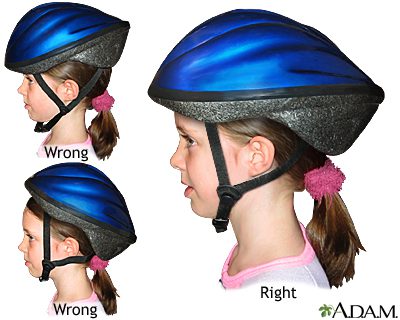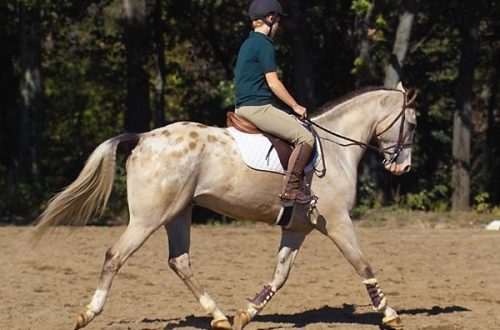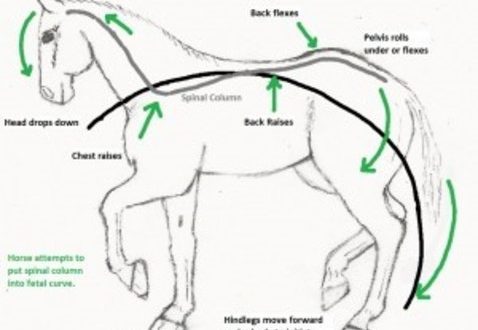
What to do if the horse “baptizes”?
What to do if the horse “baptizes”?
Reader “Practical Horseman asked a question, the answer to which may be of interest to many equestrians. Competitor Kim Williams, athlete and coach, answers it.
Question. I am an amateur athlete. With my 12 year old gelding we take part in show jumping competitions. The knight enters the barrier well, but due to the fact that he changes his foot, we often make mistakes, and this affects our results. The change usually occurs when entering from the left foot from a long drive to a single obstacle. The horse changes its foot in a walk before taking off. Also, when he comes in from a turn on his left foot, he usually jumps from his left foot, but changes to a right canter on landing. He is healthy and is regularly examined by a veterinarian. Please, help!
Response. It is perfectly normal for a horse to approach an obstacle on one foot and land on the other. However, an unauthorized change of leg, situations when a horse “baptizes” at a gallop, in hunting show jumping are considered a mistake, and the judges fine for this (someone less, some more).
Such changes may occur for various reasons. More often than not, if a horse “baptizes” on approach to an obstacle, he is probably trying to shift his weight away from some source of discomfort (perhaps pain) or a weak point in his body in preparation for the take-off, which requires considerable effort from both the front as well as hind legs. The horse may change legs to transfer the physical load to a stronger or more reliable limb.
While you take your horse’s health and well-being seriously, it’s worth re-thinking if there are any “medical” sources of the problem. Have your veterinarian examine your horse carefully to determine if he feels pain in any part of his body or in his legs. The horse may have pain in the hooves or back, hock or sacrum. This way you can relate your problem to the pain.
Check the saddle carefully. If you don’t know how to do this, ask a trainer, a specialist consultant or a saddler for help. Is the saddle too high on the withers? Does it shrug your shoulders? Any discomfort can contribute to the problem of an unauthorized change of leg!
The next reason why a horse “baptizes” may be its asymmetry, “one-sidedness”. Like humans, many horses have a weak side and a strong side. Your horse may simply prefer to push off with his stronger leg.
Once you have eliminated the source of the discomfort, begin to correct the horse’s habit by focusing on developing his straightness. In order for a horse to take off well, its body must be in alignment when taking off, jumping and landing. Her weak side will become stronger as she develops as part of the work on straightforwardness. This will make the horse less likely to baptize at a canter.
At home workout place two poles on the ground perpendicular to the obstacle (one on the take-off side, the other on the landing side). Roll them a couple of inches to the right of center, close enough to the path that your horse will notice them, but not so close that he can step on them. This will help you maintain a straight line before and after the barrier.
Another useful exercise – Initiate a mid-air turn by asking the horse to land on its weaker leg. In your case, ask her to turn left and land on her left foot. Try jumping on a circle about 30 meters in diameter so that the horse constantly turns to the left. This will help strengthen her weak leg and prevent her from “walking” on her favorite leg.
swedish oxer will force your horse to focus on the center of the obstacle and keep his body straight as he jumps. To build a Swedish oxer, start with a square oxer raised to your normal height. Then lower one front pole down several holes on one side. Raise the second front pole the same number of holes. Do the same with the back pole, but lower and raise the opposite calabashes so that the pole is higher on the side where the front pole is lowered, and vice versa.
How you deal with this problem in a tournament depends on your level of ability. If you are a beginner, you may be tempted to pull on the left rein to prevent the change of foot. But this will only force your horse to stick his side out to the right even more, making it more comfortable for him to change legs. It may seem counterintuitive, but you need to pull on the right rein to straighten her body and save her leg. Imagine your horse’s body is a curved banana, with his head and hips to the left of the rest of his body. To straighten the banana horse, you need to turn the banana into a pencil by pulling on the right rein. Meanwhile, themselves sit upright, centered, and close your outside leg (in this case, your right leg) slightly behind the girth to keep the horse’s body from bulging to the right.
More experienced riders should use the same technique. Also, as they move along the route, they can think more strategically to prevent the change of foot. So, if you’re going to make a left turn into an obstacle, you might go over the turn slightly and then try to enter the obstacle at a slight angle from right to left. This will prevent the horse from shifting his weight as he approaches the barrier and thus help keep the movement on the right foot.
Kim Williams (source) translation Valeria Smirnova.





